Let us start with Spanda; tell us its story… Did Spanda emerge from your own innate nature of curiosity and questioning?
Yes. You see, however good your training is and however inspired you are, I realized that you also carry with you a great deal of apprehension about whether it could not be different, or better. This may come across as snobbish - when someone who steps out of an intensive training at the Bolshoi or Kalakshetra questions its methodology. But I don’t think it is wrong to do so.
I think it is who I am. I have, in a sense, always been an outsider in every situation in my life. As a result, I always find myself able to look at things without being too attached to them. I truly like to think about things, to analyse, to question. I think my gurus instilled in me that general curiosity to question…
What inspired the genesis of Spanda? Did it happen naturally?
I was teaching a bunch of children in Delhi, some were children of friends - people who shared my ideologies. But as these children grew up, I realized their apprehension about making a life-choice as a soloist. They had learnt well, just like I had. It is a process of repetition after all, of being whipped into condition. But I began to wonder increasingly if those very things were also in a sense, limiting.
Take ‘speed’ for example. I felt as a result of speed in dance, we were losing something of value in music, the pause, the silence, the contemplation. I felt compelled to slow it all down a bit. I felt an urge to see where the core of an adavu came from. I realized as time went by that it was not all about the hands and the legs; it was also about my gut – the core. I had to learn to use that.
And that discovery led me to start working with these youngsters on a new way of expressing themselves. At that time, I had five senior students. That phase also coincided with my own collaborations with Madhavi Mudgal where we were similarly looking at new sahitya and music - from Led Zepplin to Kumar Gandharva – enjoying the things we loved at that time…
Spanda was born in 1995. I discovered that I had a body of work that was ready and so we came out with it and christened it Spanda; because in a sense, we had actually gone to the core, to the very heartbeat. Spanda meant that inner vibration, a pulse and it was a very joyous process.
Take ‘speed’ for example in dance.
I felt as a result of speed in dance, we were
losing something of value in music, the pause, the silence,
the contemplation. I felt compelled to slow it all down a bit.
I felt an urge to see where the core of an adavu came from. I realized as time went by that it was not all about the hands and the legs; it was also about my gut – the core. I had to learn to use that. That discovery led me to start working with these youngsters on a new way of expressing themselves
Has Spanda been a liberating experience? In moving away from a particular kind of methodology, were you, in a sense, breaking free?
Yes. I grew up in a very hierarchical system. Let me tell you a story. The very first time we, as part of Kalakshetra were on tour in Europe, Krishnaveni (Lakshmanan) declared that she was pregnant and couldn’t dance. Within a few hours, between 11am and the evening when the performance would begin, I had to learn the part of Sita in Sabari Moksham. I still remember that moment; we were all downstairs, at the basement of the auditorium, ironing our costumes and doing menial tasks when Athai (Rukmini Devi) called me. She was sitting alone in an empty large auditorium and said it to me, “You better start working now because you have only five hours.” From altering costumes to learning my part, I had my work cut out. But critically, by the time I reached the basement again, I had no friends left.
Where I was one of the many, suddenly, in a few hours, I was pretty much on my own!
It meant also coming to terms with many many things; the burden of responsibility, of expectations…. But when you have a guru like Rukmini Devi, you do it for her… In a way, from thereon, life changed.
Have things, I mean, the hierarchical systems, changed now?
No. The hierarchy is still a very strong thing. It still exists.
Is Spanda then non-hierarchical?
I wanted to break away from that hierarchy. In Spanda, there is no one who stands out. Not even me. In fact, I wasn’t in it at all initially but when a few dancers moved on, I had to come into it and when I did, I was just a strong element in it perhaps, sometimes even a weak element. Because where you normally have your students at a safe distance from where you can actually frown on them, you were now literally holding bodies and hands. My students could feel me physically and that was a big change for them. But that’s what it is all about too. It levelled off those sharp edges and we became a team.
Also, many of my students started off with me when they were six and by the time, we got to where we were, they were in their twenties; in different phases of their life – getting married, in love. I could not go on treating them like students.
We became friends and from thereon emerged a lot of good work that we all enjoyed doing together.
Spanda is a democratic trust. Whatever we earn, we split amongst ourselves and keep a small sum for the kitty – for music and costumes.
In Spanda, there is no one who stands out. Not even me. In fact, I wasn’t in it at all initially but when a few dancers moved on, I had to come into it and when I did, I was just a strong element in it perhaps, sometimes even a weak element… My students could feel me physically and that was a big change for them... It levelled off those sharp edges and we became a team
The pieces we work on are pieces that I am naturally attracted to. The abstract does not mean that we don’t work with sahitya. But we do it in a way that we don’t have to wear crowns and beards and moustaches. You can enact those same dramas without all the paraphernalia.
In our work, the male-female divide disappears. We all become male and female energies, as the requirement demands. The result is, there is no division based on sex, caste, creed, or religion of the dancers, not even of the characters we portray.
I started with pre-vedic texts on the pancha-bhootas – the elements, for example. These are not meaningless sahitya. On the other hand they are poorna or full of meaning, but are not narrative text. I believe that the narrative is something that we hide behind. In my understanding, it is the death of the voice of the jiva-aatma, the voice of the human soul. Which in our form is the voice of the nayika.
Drama and myth also provide man with morals and critical life-lessons, but the telling of the story most often distracts from the philosophical essence of it. In music, the singular voice of the aatman is still centre-stage. Organisers do not ask classical musicians to do harikatha in all their katcheris. But the dance scenario has changed. It seems as though organisers, like children also want to be told stories! And they are happy that audiences ‘understand’ these. The dramas of myth and storytelling have taken centre-stage. Even human lives are being enacted. We ought to leave that to plays and films. Even in varnams and padams, you see the sancharis are immediate forays into the dramatic elements, forgetting the protagonist’s voice completely and moving the narrative to the one addressed!
The students you work with then, as a result of Spanda, also question the nature of things, right?
In Spanda they are not my students. Sai Santosh, for instance is Adyar K. Lakshman’s student, Ashwini Viswanathan is Jayanthi Subramaniam’s student, Christopher, Hari, Arun and Sathyapriya are students of the Kalakshetra, a few are my own students, who also learn from others. They treat me as a choreographer/dancer and not as a guru, because I am part of the dance as well. Inadvertently though, they are honing in their form and learning all the time, because the work is like that. It is intense. We are grappling and trying to understand time and space constantly, and that is something students of dance and soloists rarely think about. But kids these days don’t ask questions; they are cheeky devils. They think they know it all! But they listen and watch carefully and pick up the nuances.
Are you learning from them?
I’m always learning from teaching; I don’t think I have learnt so much from Spanda as from teaching in a classroom, especially from children. From the time they are about six, they are at their creative best and extremely perceptive; they are watching everything, even things that you don’t see and they allow you the opportunity to gawk once in a while; it’s like coming up against reality in a way that we adults have almost lost our sensitivity for.
Can you share some teaching stories with us…
Well, I remember once teaching a bright young six-year-old. We were doing the fifth thai yum tat tat very slowly. She was doing the adavu well. So as I sat on the floor, I suggested that she might now want to add an attami or neck movement in the gap between two beats. She listened to me intently, watched me carefully do the neck movement, and said, “Okay!.” And as she repeated it, she wiggled her bum and went on with this sequence quite seriously. It was so cute and I soaked in that moment wondering how fresh, unusual and beautiful it was. After a while, my seniors, who were practicing somewhere in the back, saw what she was doing and tried to intervene and correct her. And she very sweetly said, “Akka said it’s fine.”
Of course, in a matter of months, she figured that what she was doing was not what she was supposed to do, and very shyly learnt how to add the neck movement.
But what I realized was that with children, you have the opportunity to challenge them at various levels. I believe that teaching is all about that - questioning the given. It’s about discovering…
You speak about conditioning and then you speak about discovering; they are in a sense, opposites of each other. How does this work?
Conditioning doesn’t have any sense of discovery. It’s like polishing. If you are doing a running hand, it’s like a signature. You practice it many times and it just becomes who you are; sometimes you even forget to read the letters.
Discovery is something else. It’s the first time you actually discovered your signature and how you fashioned it. It has in it, a bit of your character, a bit of your parents’ character, it’s a little bit of what you think of yourself, of what you might be.

It’s like that moment when you adopt an art form, you are fashioning it for yourself. We all know the alphabets of the form but your handwriting vis-à-vis mine, how I fashion it for my character or merely for convenience depending on what I think of that art. Is writing merely a convenience? In that case you don’t care about your handwriting. You write out a prescription that no one understands – even the pharmacist! But for some of us, artistes, we wrote copious pages of beautiful writing for no real reason, we just indulged ourselves to evolve for ourselves an identity of our own.
Having said that, I recognize how amazing the teaching methodology must have been that many of us went on to become consummate artistes. By the time we were sixteen, when we stepped out of an institution, we had had so much exposure and experience, and all of the highest order that it was only natural that we emerged as fairly balanced in all aspects artistes.
They packed so much into a day that we had no time to think about drugs or sex. I remember sitting cross-legged, straight-backed on the floor through the concerts of stalwarts like M D Ramanathan or Budalur Krishnamurthy Sastrigal - for three hours, without even daring to move. That training. discipline and exposure was so enriching that when I stepped out of the Kalakshetra, I actually couldn’t listen to too many others, as I had already heard the best of the best.
I’m curious about how the institution was rigid and freeing at the same time. Can those two co-exist?
When I was Chairperson, Central Board of Film Certification, one of the first things that one deals with, is that while the Constitution of India grants every citizen the right to freedom of expression, that freedom comes with a clause - it must be respectful of the environment in which it is expressed.
Personally, I would like not to be hated so much but the environment is such that I am told there is a lot of hate around me. I don’t get onto websites that have all kinds of stuff about me. What I don’t hear or read, I don’t know about. But I guess it’s alright to be misunderstood by people because after all we are humans, and there is the need to love and to hate. So what can I do, or say?
Teaching and learning are a lot like that. If you look at it from one point of view, it seems to be interpreted with rigidity. Yet there were others who showed you the freedom implicit in it as well. Rigidity is bound to lead to hate for the subject you are learning. Freedom too is limiting.
For me teaching was to explore another method. But at no point, can you loosen the rope completely. The classicial demands rigour. The trick therefore is to ‘inspire’ repetitiveness, and I believe there are a thousand ways to make that happen, in a way that people are encouraged to use their mind and intelligence and the actual drudgery of the idea of repetition is taken away.
You’ve had to do all this on your own; to think out of the box, to teach, to continue to create, to feel inspired, to inspire… Is being a dancer a solitary journey? Have you learnt to endure through the many challenges life has thrown your way?
I have always been a loner. Not only by the decisions I make but also by my birth and the circumstances of my life. I’ve never really been a part of this or that. But the truth is, I like what I do. I’m happy being that person. I think it’s a privilege being in the arts and I don’t need to have any other form of expression. It’s not like I can’t shake my booty but it doesn’t give me the pleasure this gives. I live and love what I have.
Have you learnt to be like that?
Life is like that. I was born a twin and I lost my sister when I was six under some very tragic circumstances. From then, I have been on my own.
Do you think life has been too harsh on you?
I sometimes wonder about that, perhaps because I am basically an introvert and generally quiet. My life became very public which is something I don’t like. If I wanted it to be public, I would have been another kind of a dancer. That hurt. I was destined to take on positions that I did not aspire for. Those who are in the know, know this to be true. Now I wish to be left alone. But it’s a price I guess you have to pay.
What is your current state of mind?
I’d like to say I feel I am able to control my body; I work very hard at it; I still enjoy solo expressions and that gives me a great deal of satisfaction. If you are happy dancing, and it takes a couple of people’s breath away, it’s a good thing.
I like the energy in Spanda, it’s an opportunity to work with young people. I teach a few students and that process of transferring some very beautiful pieces to them gives me a great sense of joy.
Personally, I would like not to be hated so much but the environment is such that I am told there is a lot of hate around me. I don’t get onto websites that have all kinds of stuff about me. What I don’t hear or read, I don’t know about. But I guess it’s alright to be misunderstood by people because after all we are humans, and there is the need to love and to hate. So what can I do, or say?
Interviewed by Akhila Krishnamurthy
6 comments Comments




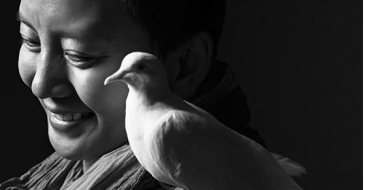
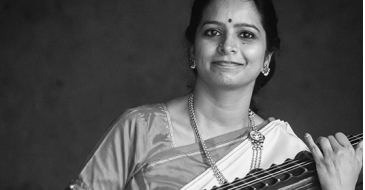
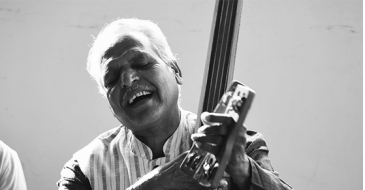
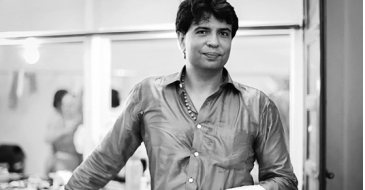
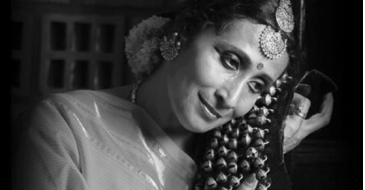
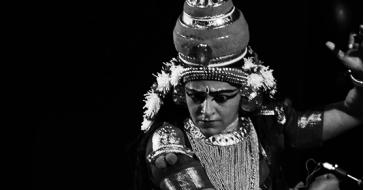
Parvathy Krishnan
June 01, 2017
Sudha Gopalakrishnan
May 02, 2017
Dr Padmaja Venkatesh Suresh
May 02, 2017
Donald Bennett
May 02, 2017
Lima das
April 21, 2017
Vasanti Nikam
April 20, 2017